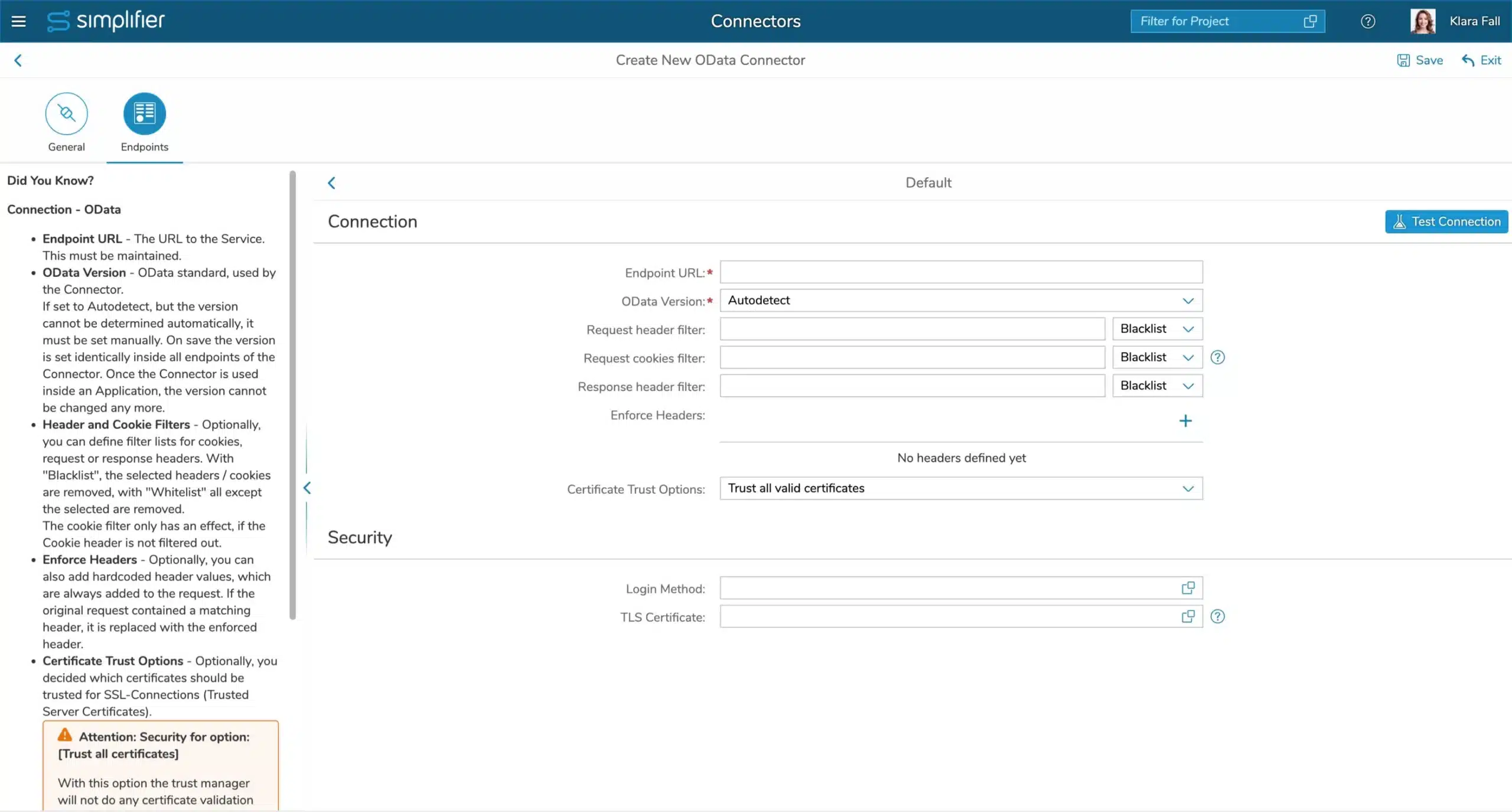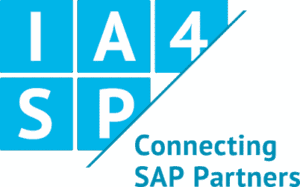OData (Open Data Protocol) enables the creation of REST-based data services that allow resources identified by Uniform Resource Identifiers (URIs) and defined in a data model to be published and edited through the use of HTTP messages by Web clients.
It allows flexible access to the databases and to create, read, update and delete (CRUD) valid data on the web. OData is able to provide consistent semantics for data exchange in client-server communication.
Create a new connector and select ‘OData’ as the Connector type.
Within the specific data on the Endpoints tab, define the endpoint. Optionally, you can also define request headers and response headers to pass through and Request cookies to be removed. Also, relevant SSL settings can be made.
Connection Settings
| Parameter | Description |
|---|---|
| Endpoint URL | The URL to the Service. This must be maintained |
| OData Version | OData standard, used by the Connector. If set to Autodetect, but the version cannot be determined automatically, it must be set manually. On save the version is set identically inside all endpoints of the Connector. Once the Connector is used inside an Application, the version cannot be changed any more. |
| Header and Cookie Filters | Optionally, you can define filter lists for cookies, request or response headers. With “Blacklist”, the selected headers / cookies are removed, with “Whitelist” all except the selected are removed. The cookie filter only has an effect, if the Cookie header is not filtered out. |
| Enforce Headers | Optionally, you can also add hardcoded header values, which are always added to the request. If the original request contained a matching header, it is replaced with the enforced header. |
| Certificate Trust Options | Optionally, you decided which certificates should be trusted for SSL-Connections (Trusted Server Certificates). |
Security Settings
| Parameter | Description |
|---|---|
| Login Method | Specifiy the Authentication needed for the Endpoint URL. |
| Certificate | Specify a certificate, if needed. |













